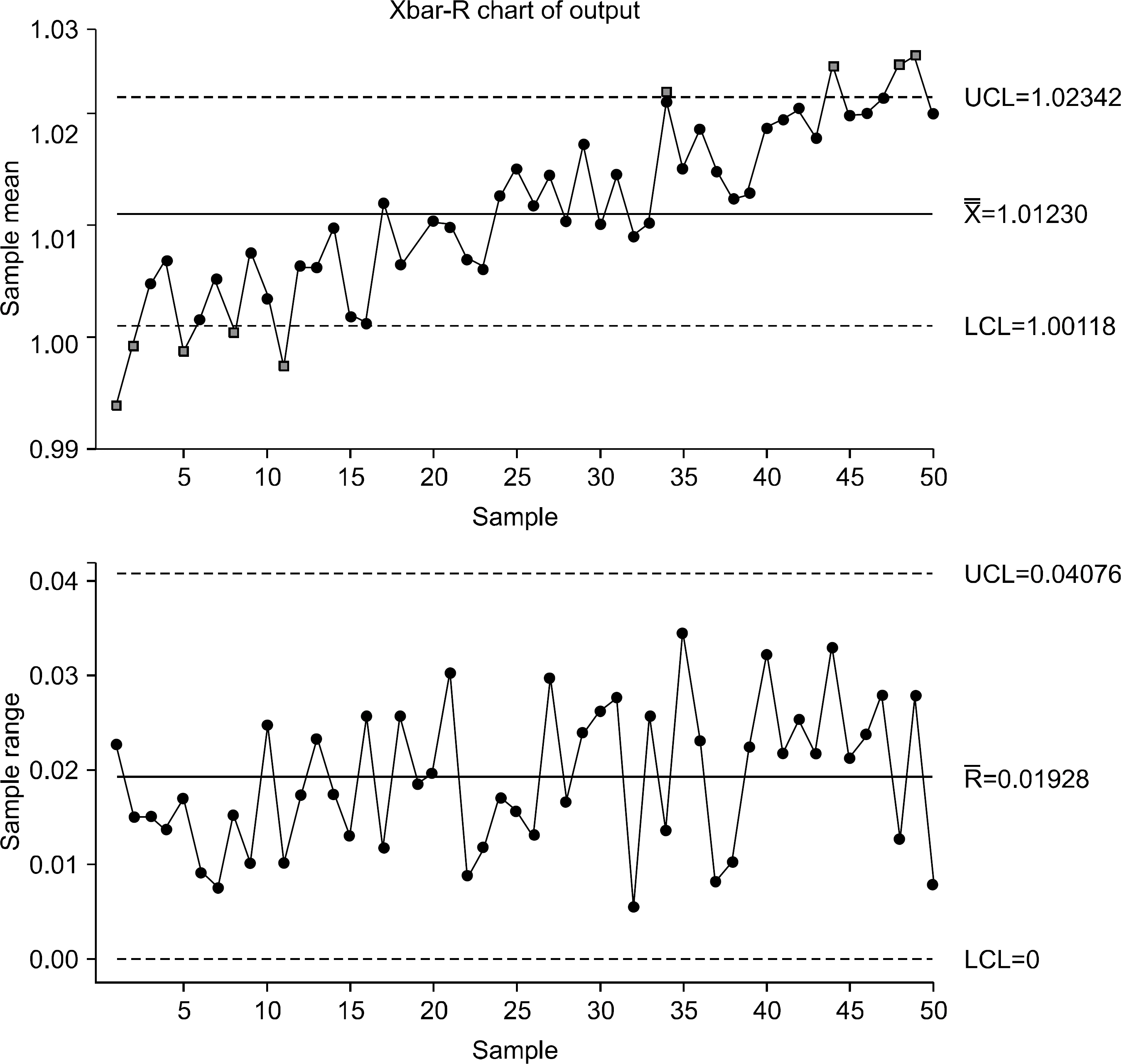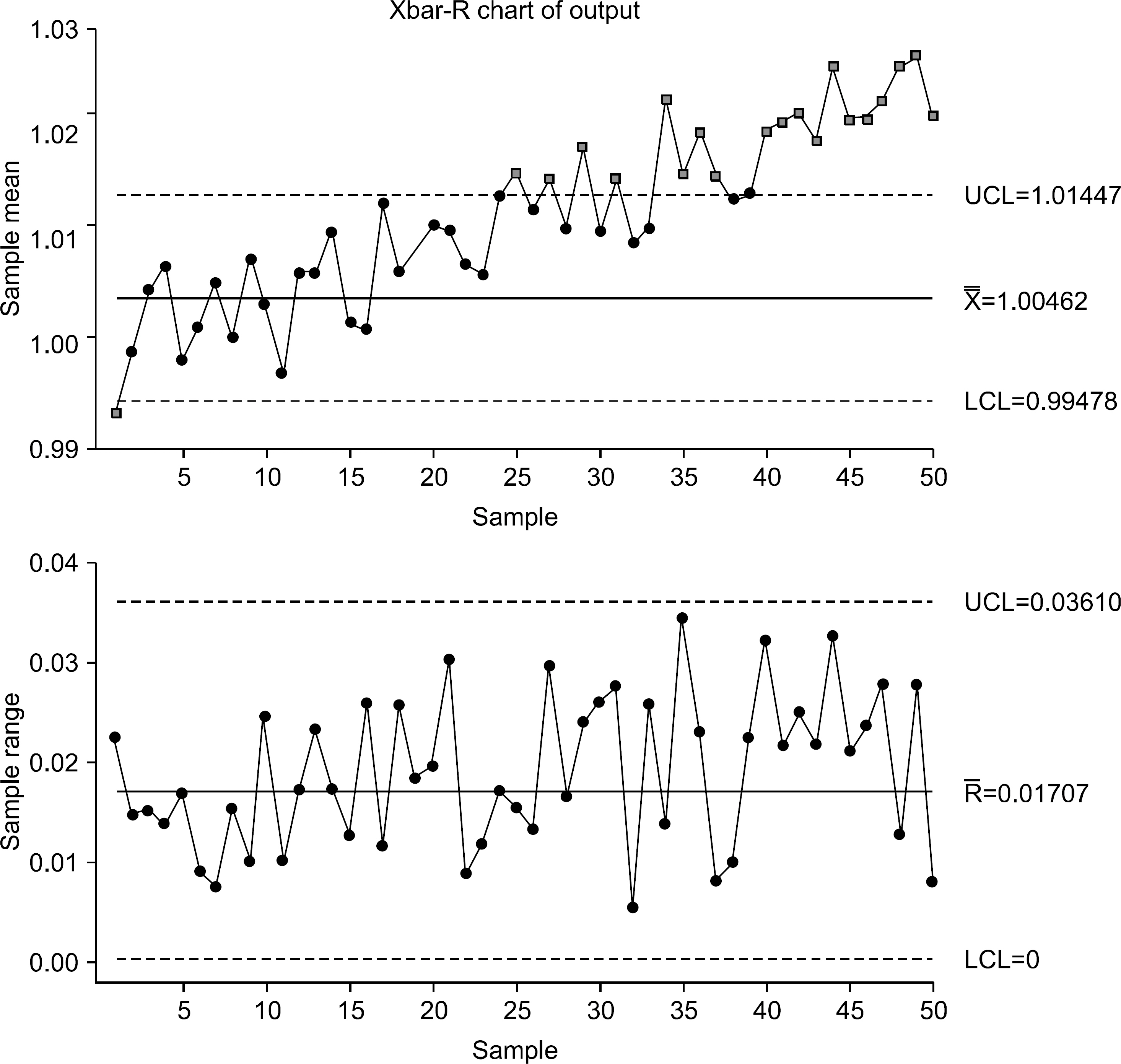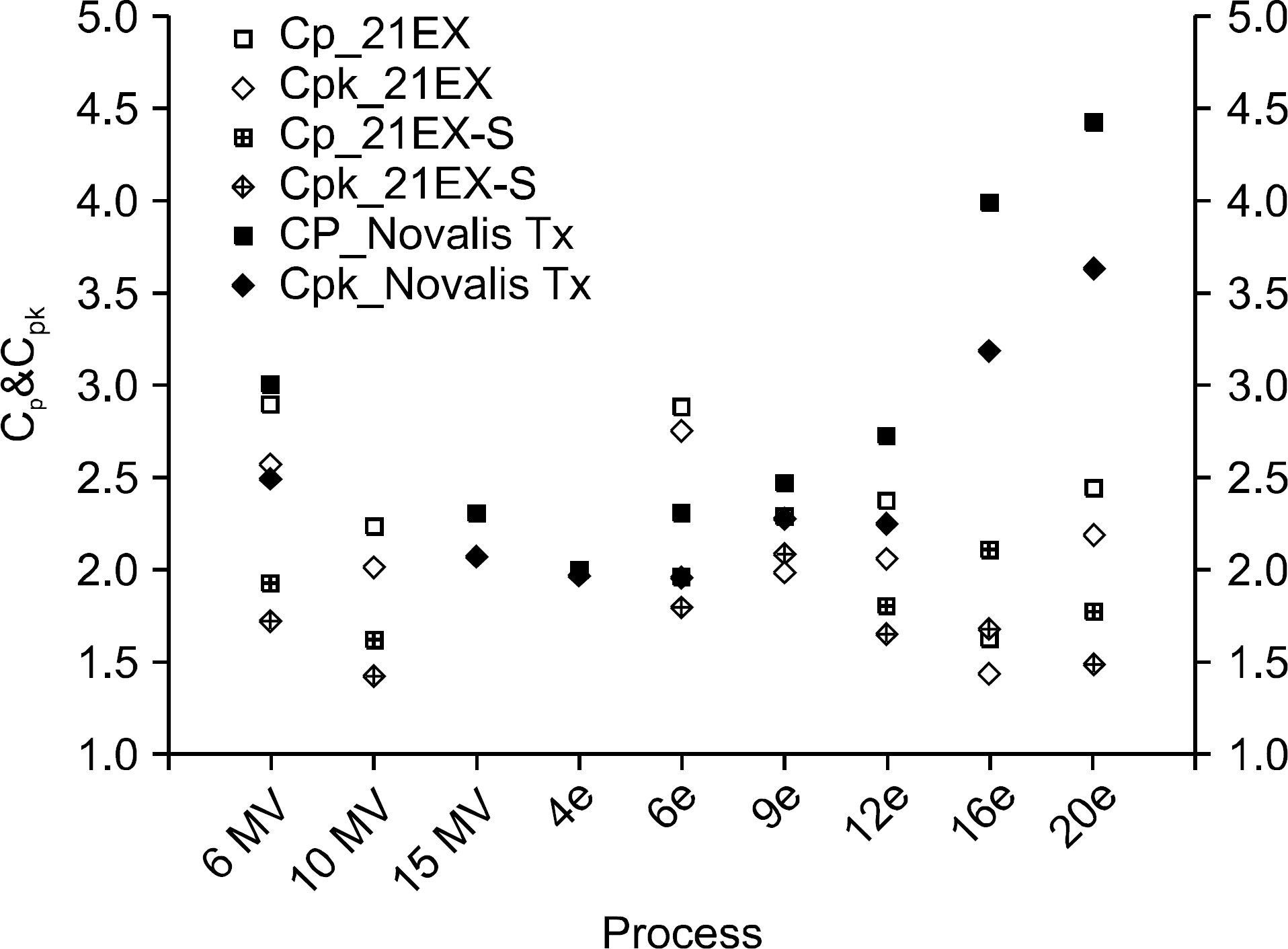Prog Med Phys.
2015 Jun;26(2):59-71. 10.14316/pmp.2015.26.2.59.
Use of Statistical Process Control for Quality Assurance in Radiation Therapy
- Affiliations
-
- 1Department of Radiation Oncology, Hallym University College of Medicine, Anyang, Korea. khcheong@hallym.or.kr
- KMID: 1889937
- DOI: http://doi.org/10.14316/pmp.2015.26.2.59
Abstract
- The goal of quality assurance (QA) is to minimize systematic errors in order to maintain the quality of a certain process. Statistical process control (SPC) has been utilized for QA in radiation therapy field since 2005 and is changing QA paradigm. Its purpose is to maintain a process within the given control limits while monitoring of error trends such as variation or dispersion. SPC can be applied to all QA aspects of radiotherapy; however, a medical physicist should have enough knowledge about the application of SPC to QC/QA procedures. In this paper, the author introduce a concept of SPC and review some previously reported studies those used SPC for QA in radiation therapy.
Keyword
MeSH Terms
Figure
Reference
-
References
1. Pawlicki T, Mundt AJ. Quality in radiation oncology. Med. Phys. 34(5):1529–1534. 2007.
Article2. Klein EE, Hanley J, Bayouth J, et al. Task group 142 report: Quality assurance of medical accelerators. Med. Phys. 36(9):4197–4212. 2009.3. Lee SH. Engineering Statistics and Data Analysis using Minitab, EreTec (. 2008.4. AIAG. Statistical process control (SPC) reference manual 2nd ed., AIAG (. 2005.5. Pawlicki T, Chera B, Ning T, Marks LB. The systematic application of quality measures and process control in clinical radiation oncology. Semin. Radiat. Oncol. 22(1):70–76. 2012.
Article6. Pawlicki T, Whitaker M. Variation and control of process behavior. Int. J. Radiat. Oncol. Biol. Phys. 71:(. (1 Suppl):):. S210–4. 2008.7. http://en.wikipedia.org/wiki/Control_chart8. Sanghangthum T, Suriyapee S, Srisatit S, Pawlicki T. Retrospective analysis of linear accelerator output constancy checks using process control techniques. J. Appl. Clin. Med. Phys. 14(1):4032. 2013.
Article9. Gerard K, Grandhaye JP, Marchesi V, Kafrouni H, Husson F, Aletti P. A comprehensive analysis of the IMRT dose delivery process using statistical process control (SPC). Med. Phys. 36(4):1275–1285. 2009.
Article10. Oh SA, Yea JW, Kim SW, Lee R, Kim SK. Analysis of output constancy checks using process control techniques in linear accelerators. Progress. Med. Phys. 25(3):185–192.11. Able CM, Hampton CJ, Baydush AH, Munley MT. Initial investigation using statistical process control for quality control of accelerator beam steering. Radiat. Oncol. 6180–717X–6–180 (. 2011.12. Han Y. Review on the pre-treatment quality assurance for intensity modulated radiation therapy. Progress. Med. Phys. 24(4):213–219. 2014.13. Basran PS, Woo MK. An analysis of tolerance levels in IMRT quality assurance procedures. Med. Phys. 35(6):2300–2307. 2008.
Article14. Gordon JD, Krafft SP, Jang S, Smith-Raymond L, Stevie MY, Hamilton RJ. Confidence limit variation for a single IMRT system following the TG119 protocol. Med. Phys. 38(3):1641–1648. 2011.
Article15. Sanghangthum T, Suriyapee S, Srisatit S, Pawlicki T. Statistical process control analysis for patient-specific IMRT and VMAT QA. J. Radiat. Res. 54(3):546–552. 2013.
Article16. Palaniswaamy G, Scott Brame R, Yaddanapudi S, Rangaraj D, Mutic S. A statistical approach to IMRT patientspecific QA. Med. Phys. 39(12):7560–7570. 2012.
Article17. Gagneur JD, Ezzell GA. An improvement in IMRT QA results and beam matching in linacs using statistical process control. J. Appl. Clin. Med. Phys. 15(5):4927. 2014.
Article18. Pawlicki T, Yoo S, Court LE, et al. Moving from IMRT QA measurements toward independent computer calculations using control charts. Radiother. Oncol. 89(3):330–337. 2008.19. Cheong KH, Lee MY, Kang SK, et al. Statistical quality control for volumetric modulated arc therapy (VMAT) delivery by using the machine's log data. J. Kor. Phys. Soc. (Article in press, 2015).20. Rah JE, Shin D, Oh DH, Kim TH, Kim GY. Feasibility study of using statistical process control to customized quality assurance in proton therapy. Med. Phys. 41(9):092105. 2014.
Article21. Pawlicki T, Whitaker M, Boyer AL. Statistical process control for radiotherapy quality assurance. Med. Phys. 32(9):2777–2786. 2005.
Article22. http://Cran.r-project.org/index.html23. http://www.hanyang.ac.kr/english/ezspc.html
- Full Text Links
- Actions
-
Cited
- CITED
-
- Close
- Share
- Similar articles
-
- The Results of the Survey about Present Situation of Quality Assurance for Radiotherapy Machine of Korea
- Quality Assurance in Intensity Modulated Radiation Theray
- Review on the Pre-treatment Quality Assurance for Intensity Modulated Radiation Therapy
- A Pilot Study of the Scanning Beam Quality Assurance Using Machine Log Files in Proton Beam Therapy
- Principles of quality management in medical imaging








